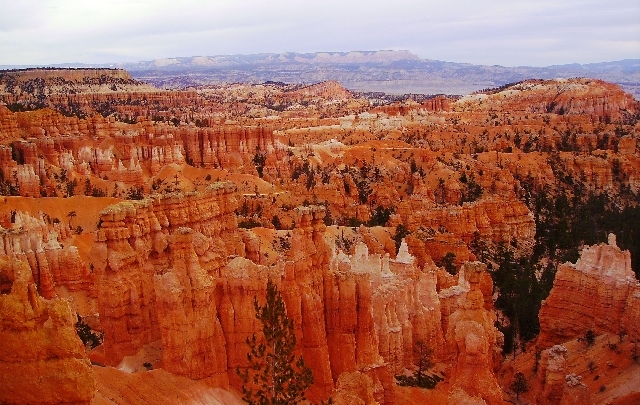Escape summer’s swelter in Bryce Canyon’s lofty elevations

Bryce Canyon National Park, Utah is enjoyed by about 2 million visitors a year who come to see its 10 deep, hoodoo-filled amphitheaters. Hoodoos are called that because they are tall natural columns that suggest living but unearthly beings. They are formed by an unusual type of erosion involving the freeze-and-thaw cycle that is repeated approximately 200 days every year due to the park’s high elevation.
The park is at an elevation of 7,894 feet, which affords wonderfully cool summer temperatures. There are two excellent, accessible trails in the park for those with limited mobility. The entire 5.5 mile, one-way Rim Trail runs from Bryce Point north to Fairyland Point. While most of it is packed gravel with some elevation gain, there is within it an especially choice section of six-tenths of a mile that is paved and flat. This short segment runs from Sunset Point north to Sunrise Point, and each point offers accessible parking. The views along this segment are some of the best in the park.
Another good destination is the one-mile Bristlecone Loop Trail, which has an elevation of more than 9,000 feet. This hard-packed trail takes you through a dense forest of ponderosa, blue spruce, white fir, Douglas fir and its namesake, the bristlecone pine. Some of these bristlecone pines found here are more than 1,700 years old. Also from this trail you can view Navajo Mountain (sacred to the Navajo Nation) and the Kaibab Plateau about 90 miles away in Arizona. Accessible parking and bathrooms are available at this location.
The 18-mile-long main park road (Highway 63) is worth the drive whether you take your own vehicle or use the park’s free, accessible shuttle. While traveling this scenic road, be sure to stop at some or all of the five overlooks that you can access just yards from each parking area.
There is plenty of wildlife in the park, including the Utah prairie dog, which can be seen in the park’s meadows. This mammal is on the threatened species list and exists only in southwestern Utah. Other mammals you might see are coyotes, gray foxes, mule deer and ringtail cats. Some birds that might be viewed include the Steller’s Jay, Clark’s nutcracker, peregrine falcon and the golden eagle.
North Campground has 13 RV sites available by reservation and 86 tent and RV sites available on a first-come, first-served basis. Sunset Campground has 20 tent sites and a group site by reservation; another 80 RV and tent sites are first-come, first-served. Sites 223, 224 and the group site are accessible. For reservations, contact www.recreation.gov.
Lodging is available in the park at Bryce Canyon Lodge’s Sunrise Unit. This has handicapped access rooms with adjacent handicapped parking facilities. Visit www.nps.gov/brca or call 435-834-5361. Ruby’s Inn, just outside the park boundary, also offers accessible rooms and parking. Visit www.rubysinn.com or call 866-866-6616. Full services are also available just outside the park’s boundary. For general information on the park, visit www.nps.gov/brca or call 435-834-5322.
Deborah Wall is the author of Base Camp Las Vegas: Hiking the Southwestern States” and “Great Hikes, A Cerca Country Guide,” published by Stephens Press. She can be reached at deborabus@aol.com.
Directions
From Las Vegas, take Interstate 15 north 125 miles, then take Exit 16 (Hurricane/Zion National Park and Utah Route 9). Follow Route 9 for 57 miles through Zion and turn left at Mount Carmel Junction onto U.S. Highway 89. Go north 43 miles and turn right onto Utah Route 12. After 14 miles, turn right on Utah Route 63, for three miles, to the Bryce Canyon National Park entrance.












